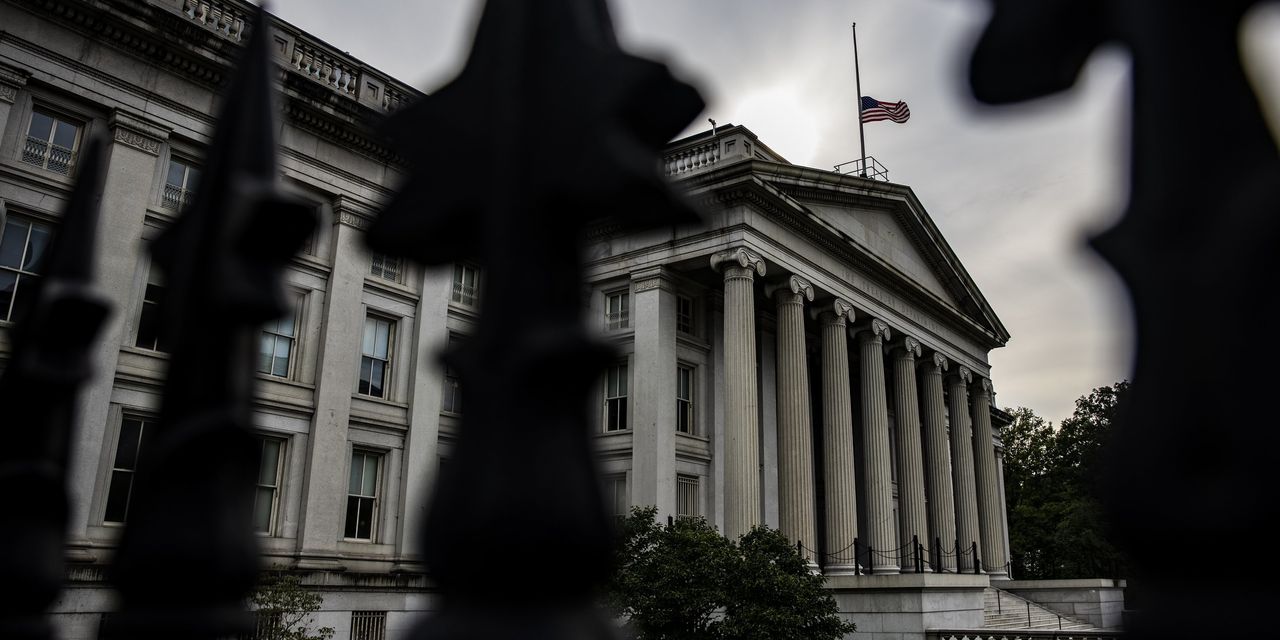
The federal government ran a $191 billion deficit during November, a bigger gap when compared with a year earlier, as additional revenue from payroll taxes and other receipts was more than offset by increased spending.
Federal outlays in November rose 30% to $473 billion, the Treasury Department reported Friday. Some federal government agencies, such as the Education Department and Health and Human Services, spent more last month compared with the same period last year in part because of pandemic-related programs, a senior Treasury official said. The Treasury Department’s spending so far in the fiscal year, which began Oct. 1, is up compared with last year in part because of its administration of the expanded child tax credit.
The Treasury said government receipts for the month rose by 28% from a year earlier to $281 billion, not adjusting for calendar differences. That increase was driven mostly by higher government revenue from payroll taxes. The official said the department is seeing higher revenue from payroll taxes due to the recovery in the U.S. economy.
In November of the previous fiscal year, the government ran a deficit of $145 billion.
The deficit last month would have been smaller by $13 billion, or 6%, compared with last year, accounting for calendar differences and shifts in the timing of certain benefit payments, the Treasury said.
The latest figures come as Congress is acting this week to increase the government’s ability to borrow and is debating a roughly $2 trillion education, healthcare and climate bill. Some lawmakers worry the bill will add to deficits and stoke inflation. The Biden administration said it is paid for through tax increases and other revenue-raising measures and would have a minimal impact on inflation.
The cumulative deficit so far in the current fiscal year stands at roughly $356 billion, smaller than at the same point last year.
The federal government in the current fiscal year is beginning implementation of a $1 trillion infrastructure spending package that became law last month. The package isn’t expected to add to the deficit until the fiscal year that begins in October 2022, according to the nonpartisan Congressional Budget Office. More broadly, the CBO estimates the package will widen the U.S. deficit by about $256 billion over 10 years.
Meanwhile, Congress is working to complete legislation that would raise the nation’s debt limit beyond the current ceiling of roughly $28.9 trillion. Treasury Secretary Janet Yellen has warned Congressional leaders that the U.S. government may not be able to fully meet its obligations as soon as Dec. 15 if lawmakers don’t act to raise or suspend the U.S. borrowing limit.
Dec. 15 is a key date because Treasury on that day plans to make a $118 billion transfer to the Highway Trust Fund, as instructed by the recently passed infrastructure law. It is also the date on which quarterly corporate taxes are due. The highway expenditure, combined with unpredictability around the amount of corporate tax receipts Treasury will receive, adds to broader uncertainty over how much cash the department will have on hand to pay bills in the coming days.
Republicans and Democrats have reached an agreement on a measure that would allow lawmakers to raise the debt limit with a simple majority in the Senate rather than the 60 votes needed for most legislation. The measure, which has passed the House and Senate and now awaits President Biden’s signature, doesn’t raise the limit itself, but paves the way for an additional vote where Democrats could pass legislation to raise the ceiling without GOP support.
Write to Amara Omeokwe at [email protected]
Copyright ©2021 Dow Jones & Company, Inc. All Rights Reserved. 87990cbe856818d5eddac44c7b1cdeb8
Appeared in the December 11, 2021, print edition as ‘Federal Deficit Widens as Spending Increases.’







